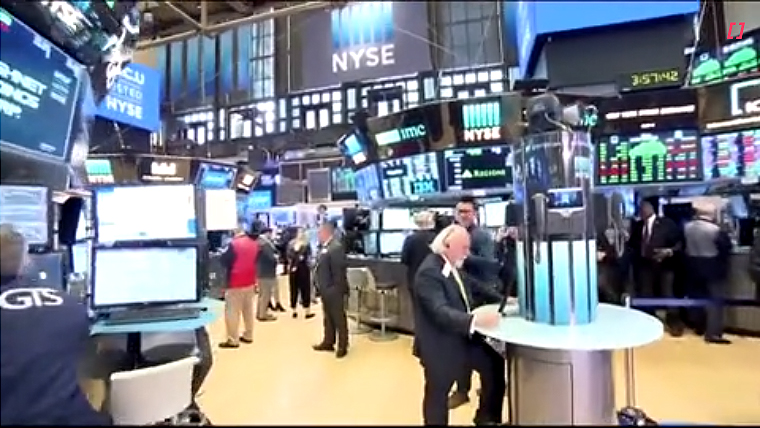
The key market move overnight has been a retracement of US Treasuries, with yields steadily higher, reversing the fall seen following the US CPI release the previous night. This hasn’t perturbed equity markets, with the Dow Jones index breaking 40,000 for the first time, but the rates-sensitive JPY is the weakest major overnight and NZD/JPY reached 95. The NZD is flat around 0.6120.
Citigroup’s US economic surprise index fell to a 16-month low, with all the second-tier data released overnight suggesting weaker than expected activity. Initial jobless claims fell 10k to 222k, only partially reversing the spike up the previous week seen in NY which reflected the public-school spring break. Housing starts and permits underwhelmed, The Philadelphia Fed business outlook index fell, and industrial production was flat.
The data barely caused a small ripple in the market, with the overwhelming theme being a retracement of the post-CPI market reaction. Recall, the broadly in-line CPI print came as a relief to the market, which had been nervous about another possible upside surprise and drove lower Treasury yields. However, US Treasury yields reversed course and steadily rose from the NZ close. The 2-year rate is up 8bps to 4.79%, now just above the level prior to the CPI release. The 10-year rate hasn’t fully retraced the move but is up 6bps since the NZ close to 4.375%.
Adding to the mood, US Fed officials have been out in force speaking to a higher-for-longer message on rates, including Williams, Barker and Mester. Also getting some air play, was the head of global markets at hedge fund manager Rokos, saying it’s unlikely the Fed will be able to cut this year, noting the Presidential election has policy implications. Also getting some airplay was commentary from JP Morgan CEO Dimon saying, “there are a lot of inflationary forces in front of us…I think the chance of inflation staying high or rates going up are higher than people think.”
The equity market hasn’t been particularly perturbed by the bounce-back in rates or hawkish commentary on inflation, with the Dow Jones index breaking 40,000 for the first time and the S&P500 currently trading flat after earlier recording another record high. Walmart posted a strong result, and noted the economic slowdown was seeing it gain market share among higher-income households, as they traded down to seek comparatively cheaper goods.
In currency markets, against the backdrop of higher US Treasury yields, the yen has been the worst performer since the NZ close, with USD/JPY up 0.9% to 155.30, unwinding almost all of the post-CPI reaction. NZD/JPY has pushed up just over 95. Yesterday, there was little market reaction to data showing Japan GDP contracted by a larger than expected 0.5% q/q in Q1, continuing the weak run, with private consumption contracting for the fourth consecutive quarter. The soft data complicates the outlook for monetary policy, questioning the wherewithal of the BoJ to tighten monetary policy.
Other key currencies are flat to slightly weaker overnight. NZD/USD is little changed at 0.6120 after a brief dip overnight to just below 0.61. The AUD’s move above 0.67 proved short-lived, and it has retreated to 0.6680. Not helping, Australian labour market data showed the unemployment rate rising to 4.1%, two-tenths higher than consensus, hot on the heels of weaker than expected wage inflation data on Wednesday. Australian rates fell on the data, although this has been mostly reversed overnight. NZD/AUD has seen a sustained push higher, trading this morning at a three-week high of 0.9165.
In the domestic rates market, the combination of lower Treasury yields post-CPI and lower Australian rates post the employment report drove NZ rates down, albeit not quite to the same extent. NZGB yields were down 8-10bps, with the 10-year rate down to 4.58%, probing levels not seen since March and down a chunky 32bps from the end of last month. There was only tepid demand for that line in the tender, with more interest in the 2031 bonds on offer. In the swap market, the 2-year swap rate fell 6bps to 4.89% and the 10-year rate fell 9bps to 4.45%.
On the calendar today, NZ PPI data are released, followed by monthly activity indicators for China, where the consensus sees stronger incremental annual growth for industrial production, retail sales and investment. Caixin is reporting that China will likely announce new policy measures to tackle the country’s persistent real estate crisis at a meeting scheduled today.




We welcome your comments below. If you are not already registered, please register to comment.
Remember we welcome robust, respectful and insightful debate. We don't welcome abusive or defamatory comments and will de-register those repeatedly making such comments. Our current comment policy is here.